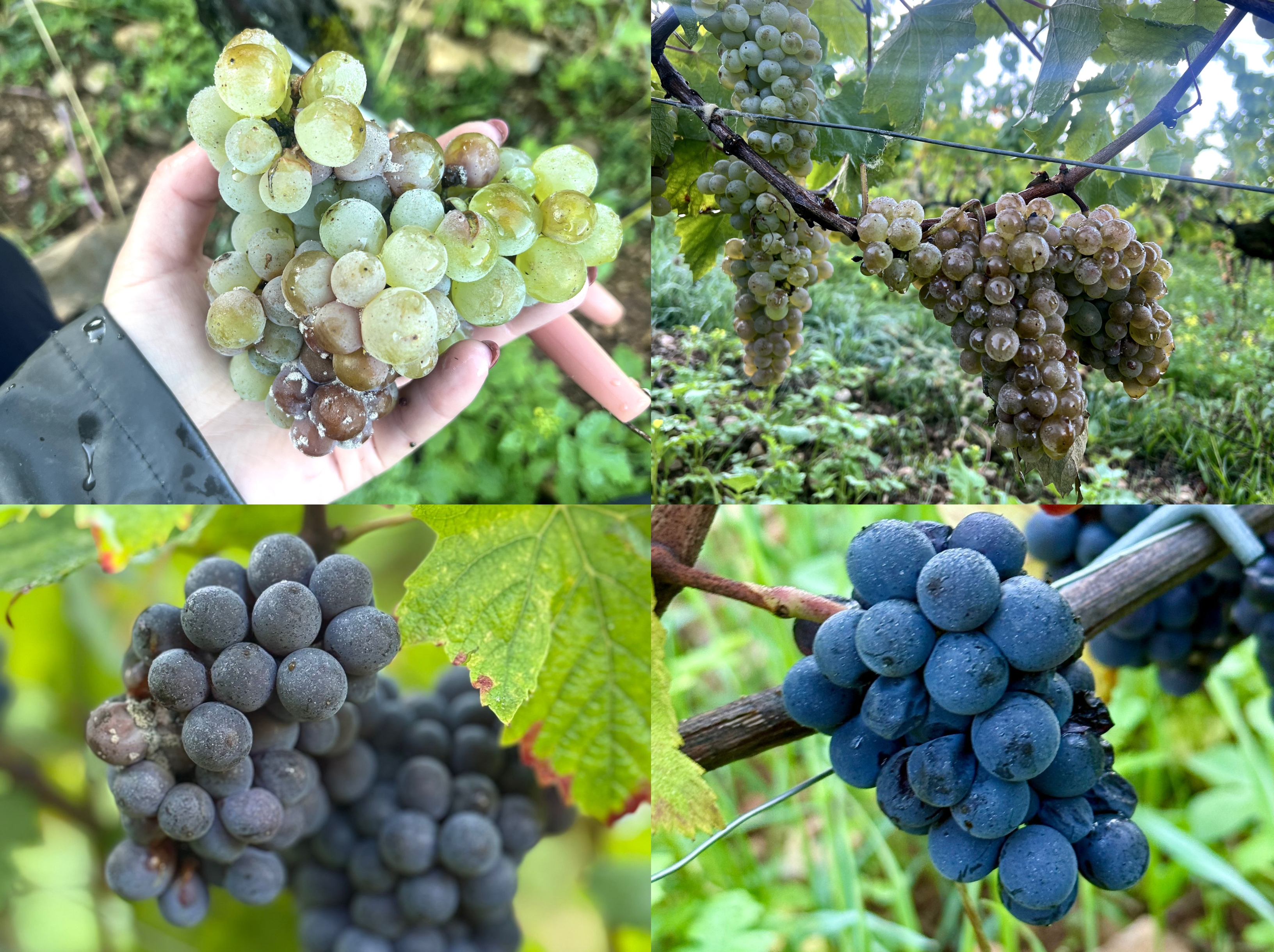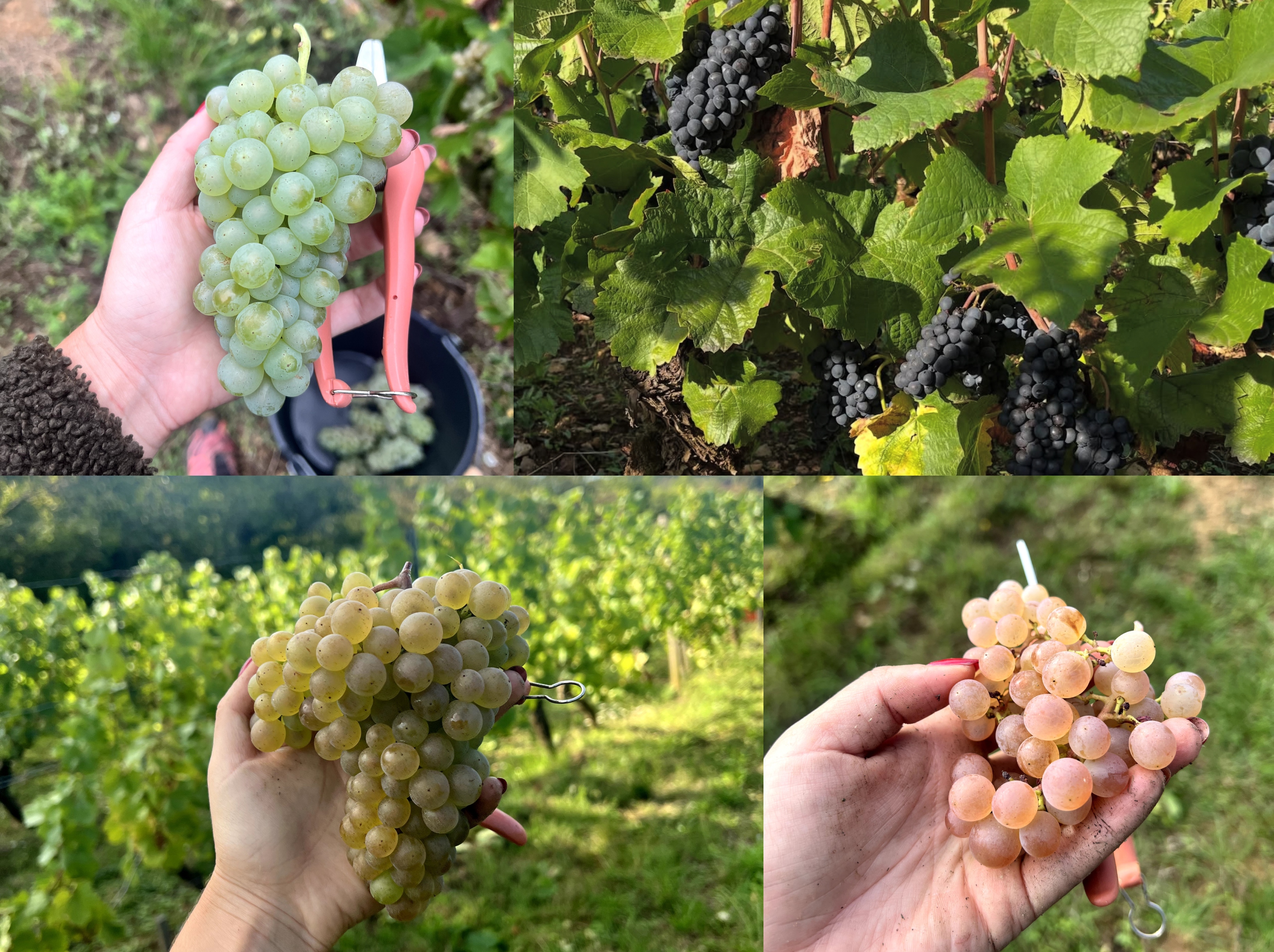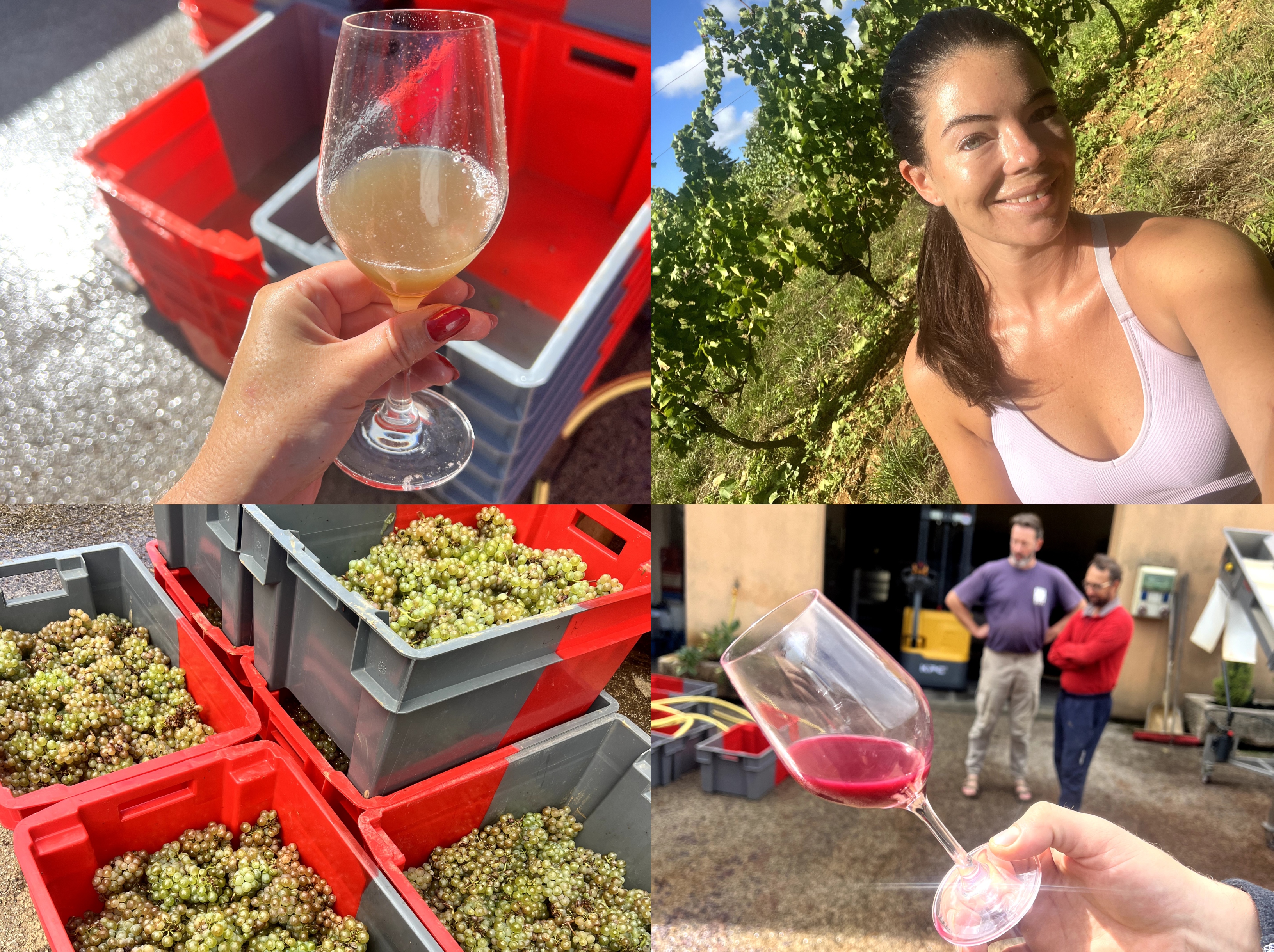Burgundy Harvest Report 2025
Once again during the Burgundy harvest, I was reminded that anything can happen until the moment grapes have arrived in the cellar.
Another eventful year has passed for the vignerons who grow the sacred parcels in the very heart of the wine world.
In the ShareWine team, we have a deep love for Burgundy. We visit the region several times a year and explore its wines tirelessly. Personally, I take part in the harvest every year — to really get that chalky soil under my fingernails and gain a firsthand understanding of the quality, quantity, and potential of the vintage. And as the 2025 vendanges is now a wrap, those fresh perspectives are exactly what I’d like to share with you in this harvest report.
So, if you’re curious about what has shaped this vintage, you're hereby invited to grab a glass and read along!
Written by Olivia Hviid Topp
Sommelier & Content Manager
Already?!
Last year, I started the harvest report by writing The harvest is ON - finally! but this year, patience hasn’t exactly been the needed virtue in the region.
Compared to the rainy 2024 season — where growers tried to stretch time as much as possible to squeeze in the last bit of ripening — the warm 2025 growing season led to a harvest that kicked off nearly three weeks earlier. For many producers, especially in the “white villages” south of Beaune, picking already begun in the last week of August.
So many factors influence the decision of when to harvest. But this year, the repeated heatwaves throughout the summer — with temperatures once again reaching above 40°C in August — played a major role in driving early ripening and thus early picking.
The growing season
Weather conditions, as always, played a crucial role for the yield and quality of the 2025 vintage. Below, you'll find an overview of how wind and weather shaped the growing season over the course of the year:
Spring
Following a mild winter, budbreak came early — April was warm and dry, prompting early shoot growth and flowering, 1–2 weeks ahead of the norm. This set the stage for an accelerated growing season and the potential for an early harvest.
The vineyards sprang back to life, but after the extremely wet and challenging 2024 vintage, buds were slightly less than usual. In other words: lesser fruit set, and thus a reduced yield potential.
Adding to the challenge, some strong winds around flowering caused further loss of fruit potential. In many parcels, this resulted in uneven fruit set (coulure and millerandage), which would later affect both consistency and sorting needs during harvest.
Summer
June was significantly warmer than average (if "average" even holds meaning anymore), with several days exceeding 35 °C. This heat accelerated vine development, but also caused issues like sunburned and shriveled berries.
However, heat does not necessarily mean drought. Not this year. The summer brought frequent and intense rainfall — enough to prevent vine stress in much of the Côte d’Or, but also sufficient to increase disease pressure, particularly fears of another mildew-prone year like 2024.
Pre-harvest
The heavy downpours of June and July continued into August, paired with ongoing heat. These weather swings created intense pressure on both vine growth and fruit ripening.
Heat combined with rainstorms caused grapes to swell rapidly, sometimes to the point of splitting their skins — creating the perfect entry point for rot. Botrytis (noble and grey rot) began to show up, escalating further as harvest approached.
Many producers avoided the worst by starting harvest as early as mid/late August — but in Côte de Nuits, where picking didn't get fully underway until the first week of September, growers were met with significant challenges:
Dilution from rain-soaked grapes during the most important week of picking
The increased spread of botrytis under these humid conditions
During that first week of September alone, approx. 150 mm of rain fell — prompting a frantic race to bring in the crop. Despite thick mud and slippery vineyard rows, teams worked hard, sometimes in the pouring rain, but luckily also during the warm, sunny breaks between the storms.
Visual signs of the struggle
Below you’ll find examples of how the challenges of 2025 have manifested on the clusters:
Sunburned berries
Botrytis outbreaks
Water-logged grapes with fragile skins, on the verge of breaking; bleeding juice and inviting rot.
These are exactly the kinds of issues that demand meticulous sorting, especially for domaines striving to avoid compromising quality, or working with minimal sulfur additions.

Fortunately, we have also harvested lots of great grapes with less problems that I'm sure will serve as a solid foundation for the vintage.
Who picked (at) the right time?
These weather patterns forced winegrowers to make difficult, strategic choices about when to start harvesting; all in the hope of striking the best possible balance between preserving freshness and achieving ripeness, without risking quality loss in the form of rot and/or dilution. The latter being a thinning out not just of aroma, but also of the sugar concentration (and thus potential alcohol), which was already balancing on a low verge.
This balancing act was palpable during harvest: decisions were shifting day by day — sometimes hour by hour. Growers had to act fast, yet carefully. It demanded a refined instinct. A kind of viticultural sixth sense, so to day — combined with daily, parcel-by-parcel analysis, depending on its' exposure and location.
The sharpest and boldest domaines opted for a in-steps harvest, beginning early in the warmer, lower located or more sun-exposed parcels, while stretching days for as long as possible in the cooler or more higher-elevation sites.
Quantity Check
After the critically low yields in 2024, the outlook for 2025 is somewhat more positive — though quantities are still far from abundant.
Several factors during the season have contributed to lowering yields:
Fewer buds and challenging flowering conditions due to wind
Subsequent losses due to sunburn and shriveling
And finally, many growers have reported that the juice-to-pulp ratio is lower than usual, resulting in less juice per kilo of grapes. This is due to the heatwaves.
For this reason, domaines have brought in fewer kilos of fruit than they had hoped for and initially expected.
The volume of Pinot Noir, especially from the Côte de Nuits, is expected to surpass last year’s low levels, but still remains modest; particularly from the more sun-exposed parcels.
In Côte de Beaune, yields for whites (Meursault, Puligny, Chassagne, etc.) are better than in 2024, yet still far from generous — and once again, significant variation exists between the flat vineyards and those higher up the slopes.
Quality Check
While extreme weather events certainly played a role in shaping the 2025 season, it is — in comparison to last year — a more stable and promising vintage overall.
That said, the season was still marked by recurrent, dramatic (weather) disruptions, making generalizations about ripeness levels quite difficult.
In fact, ripeness this year varies quite depending on:
The specific location
The harvest date (where a few days made great difference)
And therefore, future tastings will likely reveal a highly variable maturity that has to be assessed on a mere parcel-by-parcel basis.
Still, I feel confident in saying that the overall mood this year was far more upbeat than in 2024. Among all the producers I spoke to, optimism was far higher, and there was a shared sense of joy in seeing good grapes entering the cellars.
From a flavour and style perspective, I’m convinced 2025 will be (yet another) vintage in the name of diversity.
I expect the white wines to show greater consistency and overall quality, as Chardonnay and Aligoté are less dependent on tannin ripeness compared to Pinot Noir.
Most producers in Côte de Beaune were able to declare “Vendanges fini!” by late August or the first few days of September. The emphasis was clearly on preserving freshness, and picking as soon as the acid balance was right.
Chaptalisation (sugar addition) will likely be widespread this year, given that initial potential alcohol levels hovered between 10–12% in many cases.
For Pinot Noir, the diversity will probably be more apparent:
Wines from earlier harvested grapes are likely to show freshness and acidity, but may carry slightly underripe or unresolved tannins, which can add a side of tad greenness and leanness.
Wines from later picks may be more balanced and rounded, but there can also be a risk of some feeling slightly sluggish or lacking aromatic clarity, especially where the pursuit of full phenolic ripeness came at the expense of freshness.
Let's cross our fingers that many domaines have picked a timing somewhat in between that can balance this out.
Taste the optimism
I’ve asked several producers the classic question: Which previous vintages might 2025 resemble?
And naturally, the answer is always the same — “Nothing is certain until the wine has finished fermenting.” Bien sûr!
So, for now i'll highlight the deep satisfaction of watching boxes full of grapes being pressed, or poured straight into large foudres for fermentation — as the case is for the full cluster reds at Chantereves, where I worked this year.
Tasting those first magical sips — whether freshly pressed juice or fermented wine straight from the press — was a true joy. And indeed did they taste great.
In summary, 2025 may well shape up to become an interesting vintage in Burgundy — particularly as a subtle rebound from the weaker 2024. Expect crisp whites and, in the best parcels, reds with real potential.
